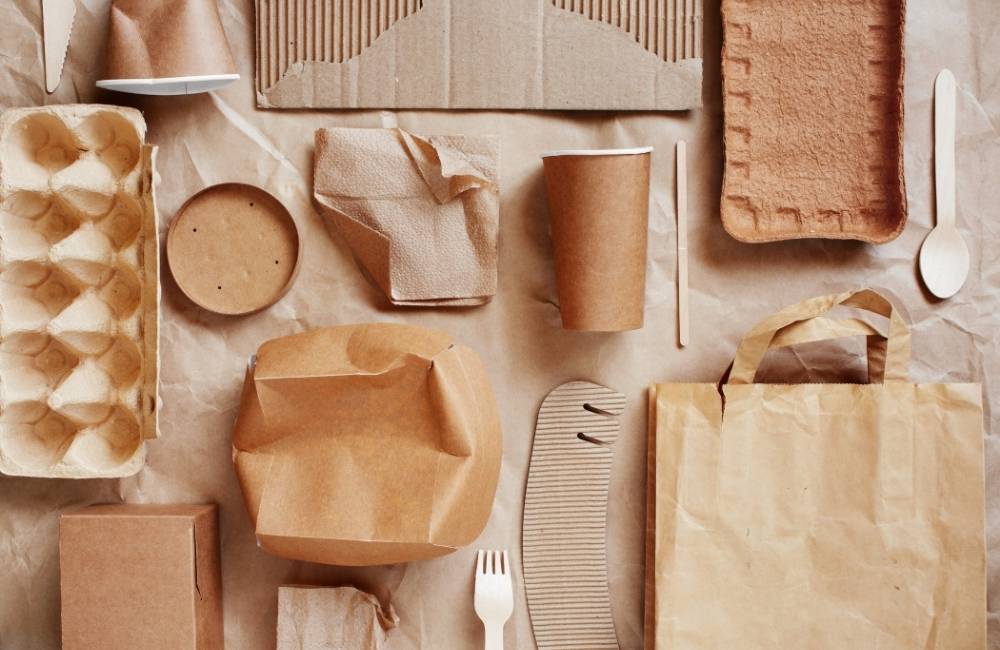It’s time to play our part in saving nature. If not for ethical reasons, because environmental destruction affects our lives in a range of ways. If you’re already conscious of this, you’re probably looking for ways that you can do more to protect the environment. Luckily, in recent years the fashion industry has become more aware of the detrimental impact textile processing can have on the environment. Hence, we now have excellent options to replace harmful fabrics.
This means that you can stay up to date with the cutting edge of fashion while looking after the environment. There are more and more textiles being developed that are not only fashionable and fabulous but sustainable and eco-friendly too!

Contents
#1 Linen
One of the oldest textiles on the planet, linen is one of the most sustainable materials around. This textile finds its origin in the flax plant. Importantly, linen is suitable for a range of different climatic conditions. Additionally, you don’t need pesticides to cultivate flax to make linen fabric, making it easy to grow without harming the environment.
Prominent linen products include:
- Towels
- Bags
- Aprons
- Napkins
- Items of clothing
The USP of linen material has to be its ability to hold its shape and form. This strong and highly absorbent textile is a phenomenal alternative to cotton.
#2 Hemp
If you want to go natural, hemp is an excellent material. It is durable, sustainable, and requires the least amount of pesticides of just about any crop. Hemp finds extensive use in the fashion world because it grows so quickly. In addition, hemp is a carbon-negative raw material, taking in more CO2 than is produced through the whole production and manufacture process.
Generally, manufacturers use a hemp-cotton hybrid a this is a very soft fabric that is also lightweight breathable, and absorbs sweat. Therefore, hemp fabric is a go-to choice for anyone living in a hot or humid climate.
Hemp is fantastic for making products such as:
- T-shirts
- Pants
- Shorts
- Hoodies
- Beanies
- Scarves
So, if you’re looking for a soft, inexpensive, and eco-friendly fabric, hemp is worth considering!
#3 Bamboo
Bamboo isn’t limited to furniture and décor items. Right now, eco-friendly bamboo dresses and other items of clothing are the talk of the town. This plant is known as being fast-growing and has a range of uses in the fashion industry. Bamboo textiles are finding extensive use due to their high sustainability and ability to blend with other materials.
Well-known bamboo products include:
- Socks
- Shirt tops
- Pillow covers
- Pants
Bamboo fabrics are eco-friendly so go ahead and buy bamboo products to enhance your style and look after the environment.
#4 Wool
Wool is a biodegradable, renewable, and traditional textile material. This material finds its origin in animals like sheep and goats. Although the eco-friendly nature of its production is a subjective topic, modern sheep farmers use safe techniques.
So it’s not surprising that products like baboushka, blankets, coats, sweaters, gloves are trending right now. Woolen products are breathable, fire- and water-resistant. Although wool can have animal cruelty and other environmental concerns, there are plenty of sustainable, cruelty-free wool producers around these days.
#5 Organic Cotton
Organic cotton is a fine example of natural farming. The cultivation of organic cotton is different from regular cotton in a range of ways. Unlike conventionally processed cotton, organic cotton is grown without pesticides and with minimal amounts of water. This makes organic cotton less harmful to nature while retaining the benefits of regular cotton.
A number of prominent brands such as Nike, Walmart are now including organic cotton in their inventory, with India, China, and Turkey now being the leading producers of organic cotton. Because it grows in healthier soil, organic cotton textiles are often higher in quality than conventional cotton – so you’ll enjoy a better product that’s also better for the environment!
#6 Soy
Another eco-friendly material used in sustainable clothing is soy. These textiles are easy to maintain being durable and machine-washable. Soy fabric is made from soy processing by-products so it follows the principles of “reuse and recycle”. Since soy fabric uses fewer resources, it is a much more sustainable option than synthetic fibers.
If you want to wear clothing that is friendly to your skin, soy fabric is an excellent option. It is soft, contains different amino acids, and is UV-resistant. Therefore, soy is an ideal textile for hot weather.
Summing Up
Sustainable and eco-friendly fabrics have a wide range of advantages. They consume fewer resources and avoid negative impacts on the environment. In addition, these eco-friendly textiles are good for your health and often give you a distinct feel.
The above eco-friendly materials find extensive use in various items of clothing and accessories. Importantly, prominent brands are using sustainable textiles to make a top-of-the-range piece of clothing. So you can look great while doing your part to protect the environment. So, upgrade your look and save the planet with these environment-friendly materials!